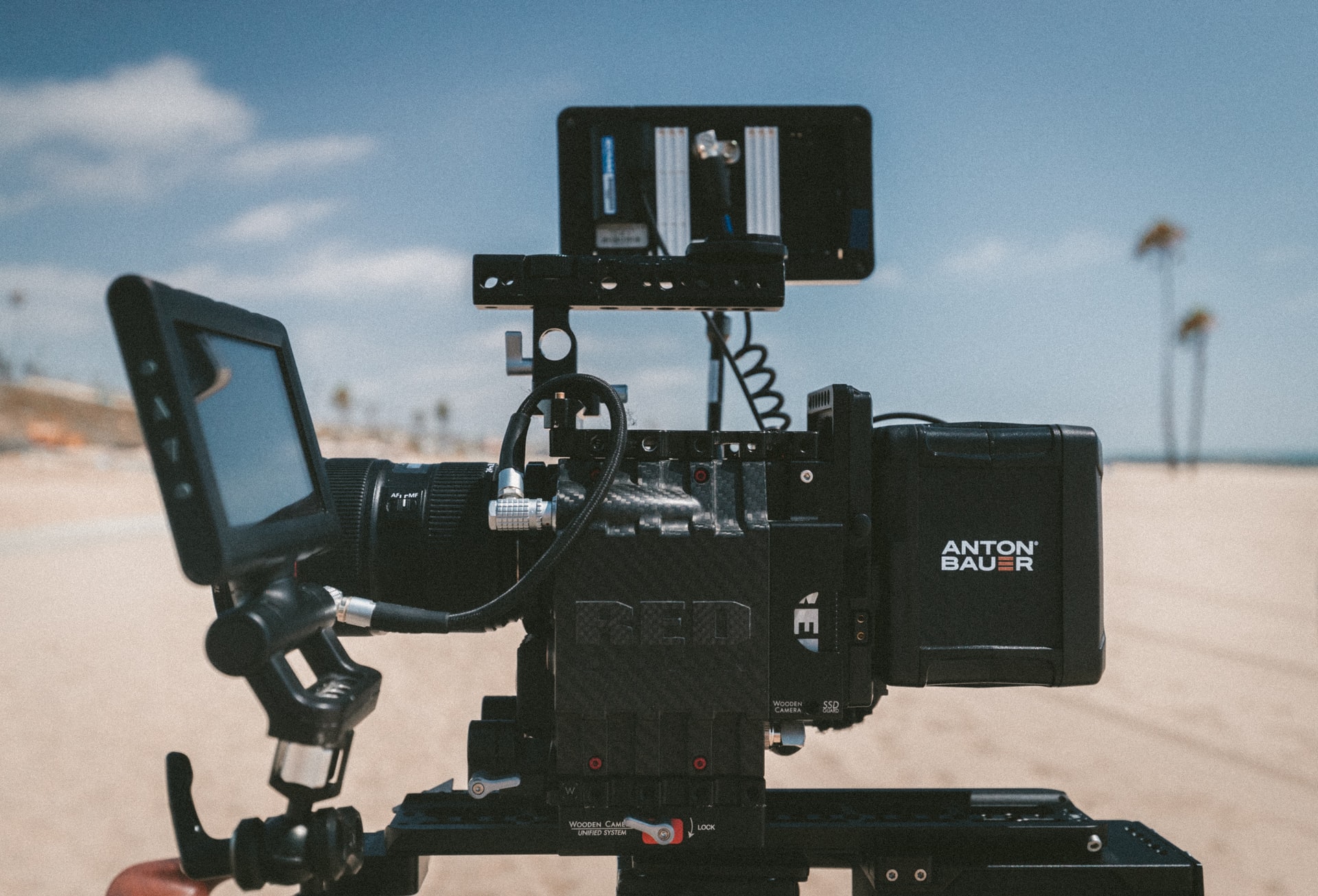Hey there, aspiring filmmaker! If you're diving into the world of moviemaking, you gotta know the drill. The film industry is a wild ride, but mastering the basics will set you apart from the crowd. Today, we're talking about 3 movie rules every filmmaker needs to know, and trust me, this is gonna be a game-changer. So, grab your coffee, hit play on your favorite soundtrack, and let's dive in!
Now, before we get all technical, let's face it—movies are magic. They take us to different worlds, make us feel things we didn’t even know existed, and sometimes, they just make us laugh our butts off. But behind every great movie lies a solid foundation, and that’s where these rules come in. Whether you’re shooting a blockbuster or an indie short, these rules are your golden ticket to success.
So, why are these rules so important? Well, think of them as the secret sauce that separates the amateurs from the pros. Every filmmaker, from Steven Spielberg to your next-door neighbor with a GoPro, can benefit from understanding these principles. Ready to level up your filmmaking game? Let’s go!
- Indianmms The Ultimate Guide To Understanding And Exploring This Trending Topic
- Ari Kytsya Leaks The Untold Story You Need To Know About
Understanding the Basics: What Are These Rules?
Alright, let’s break it down. The three movie rules we’re about to explore are not just random tips—they’re the backbone of every successful film. These rules are rooted in storytelling, visual design, and audience engagement, and they apply to every genre, style, and budget. Here’s a quick preview:
- Rule #1: Show, Don’t Tell
- Rule #2: Respect the 180-Degree Rule
- Rule #3: Master the Rule of Thirds
Each of these rules plays a crucial role in how your audience perceives your film. Let’s dive deeper into each one and see why they’re essential for every filmmaker out there.
Rule #1: Show, Don’t Tell
Let’s start with the golden rule of storytelling: show, don’t tell. This principle is all about letting your audience experience the story through visuals, actions, and emotions rather than relying on dialogue or narration. Think about it—would you rather watch a character struggle with their emotions through body language or listen to them explain it in words? The answer is obvious, right?
- Movierulz 2025 Kannada Your Ultimate Guide To Stream And Download Kannada Movies
- Jameliz Onlyfans Leaks The Truth Behind The Controversy And What You Need To Know
Here’s why this rule matters: movies are a visual medium. If you’re constantly explaining everything through dialogue, you’re missing out on the power of cinema. Instead, focus on creating compelling visuals that tell the story for you. Use camera angles, lighting, and music to evoke emotions and convey meaning. Your audience will thank you for it.
Why Is This Rule So Important?
This rule is more than just a suggestion—it’s a fundamental part of filmmaking. When you show instead of tell, you engage your audience on a deeper level. They become active participants in the story, piecing together the narrative through what they see and feel. This creates a more immersive experience and keeps viewers hooked from start to finish.
For example, take a look at films like "The Revenant" or "Mad Max: Fury Road." These movies rely heavily on visuals to tell their stories, and the result is nothing short of breathtaking. By showing rather than telling, these films create an unforgettable experience that stays with the audience long after the credits roll.
Rule #2: Respect the 180-Degree Rule
Now, let’s talk about the 180-degree rule. This might sound technical, but trust me, it’s crucial for maintaining continuity in your scenes. The 180-degree rule is all about keeping the spatial relationship between characters consistent throughout a scene. By doing this, you ensure that your audience doesn’t get confused about who’s where and what’s happening.
Here’s how it works: imagine an invisible line running through the middle of your scene. All your camera angles should stay on one side of this line to maintain the audience’s sense of direction. If you cross the line, it can create confusion and disrupt the flow of the scene. Simple, right?
Why Does the 180-Degree Rule Matter?
This rule is all about creating a seamless viewing experience. When done correctly, your audience won’t even notice it—but if you break it, they’ll be scratching their heads trying to figure out what’s going on. By respecting the 180-degree rule, you ensure that your scenes flow smoothly and your audience stays engaged.
Take a look at any classic Hollywood film, and you’ll see this rule in action. From "Casablanca" to "Inception," filmmakers have been using the 180-degree rule for decades to keep their audiences grounded in the story. It’s a simple yet powerful tool that every filmmaker should master.
Rule #3: Master the Rule of Thirds
Our final rule is all about composition: the rule of thirds. This rule is a guideline for framing your shots in a way that creates balance and visual interest. By dividing your frame into thirds both horizontally and vertically, you can place your subject along these lines or at their intersections to create a more dynamic composition.
Why does this matter? Because good composition makes your shots more visually appealing. When you frame your shots using the rule of thirds, you draw the viewer’s eye to the most important elements in the frame. This creates a more engaging and professional look that will elevate your film to the next level.
How to Apply the Rule of Thirds
Using the rule of thirds is easier than you might think. Most cameras and smartphones have a grid overlay feature that makes it simple to align your shots according to this rule. Whether you’re shooting a wide landscape or a close-up of a character’s face, the rule of thirds can help you create stunning visuals that captivate your audience.
For example, take a look at films like "The Grand Budapest Hotel" or "Amélie." These movies use the rule of thirds to create visually stunning compositions that draw the viewer into the story. By mastering this rule, you can achieve a similar level of professionalism in your own films.
Putting It All Together: Why These Rules Work
Now that we’ve covered the three movie rules every filmmaker needs to know, let’s talk about why they work. These rules are not just random guidelines—they’re based on decades of experience and research in the film industry. They’ve been proven to create engaging, visually stunning films that resonate with audiences around the world.
Here’s the thing: filmmaking is both an art and a science. While creativity is essential, there are certain principles that every filmmaker should follow to ensure their work is successful. By mastering these rules, you’ll be well on your way to creating films that captivate and inspire your audience.
How to Apply These Rules in Your Own Films
So, how do you apply these rules in your own projects? Start by analyzing your favorite films and identifying how these rules are used. Pay attention to how the filmmakers use visuals, composition, and continuity to tell their stories. Then, experiment with these techniques in your own work. Practice makes perfect, and the more you use these rules, the more natural they’ll become.
Remember, these rules are not meant to limit your creativity—they’re meant to enhance it. By mastering these principles, you’ll have the tools you need to create films that stand out in a crowded industry.
Common Mistakes to Avoid
While these rules are essential, it’s also important to know what not to do. Here are a few common mistakes filmmakers make when applying these rules:
- Over-explaining: Don’t rely too heavily on dialogue or narration to tell your story. Let the visuals do the talking.
- Breaking the 180-Degree Rule: Make sure you’re consistent with your camera angles to avoid confusing your audience.
- Ignoring Composition: Don’t neglect the rule of thirds—good composition is key to creating visually appealing shots.
Avoiding these mistakes will help you create films that are both technically sound and creatively compelling.
How to Avoid These Mistakes
The best way to avoid these mistakes is to practice, practice, practice. Film as much as you can, and don’t be afraid to make mistakes along the way. Every filmmaker makes mistakes—what sets the great ones apart is their willingness to learn from them.
Additionally, seek feedback from other filmmakers and industry professionals. They can offer valuable insights and help you identify areas where you can improve. Remember, filmmaking is a collaborative process, and learning from others is one of the best ways to grow as a filmmaker.
Real-World Examples of These Rules in Action
To see these rules in action, let’s take a look at some real-world examples. Films like "Parasite," "The Social Network," and "Get Out" all use these principles to create unforgettable experiences for their audiences.
For instance, "Parasite" masterfully uses the rule of thirds to create visually stunning compositions that reflect the film’s themes of class disparity. Meanwhile, "The Social Network" relies heavily on the 180-degree rule to maintain continuity during its fast-paced dialogue scenes. And "Get Out" uses visuals and symbolism to tell its story in ways that dialogue alone couldn’t achieve.
What Can You Learn from These Films?
By studying these films, you can gain valuable insights into how to apply these rules in your own work. Pay attention to how the filmmakers use visuals, composition, and continuity to enhance their storytelling. Then, incorporate these techniques into your own projects to create films that resonate with your audience.
Final Thoughts: Embrace the Rules, Break the Mold
And there you have it—the three movie rules every filmmaker needs to know. These principles are the foundation of great filmmaking, but they’re not the end-all-be-all. Once you’ve mastered these rules, feel free to experiment and break them when it serves your story. After all, filmmaking is all about creativity, and the best films often push the boundaries of what’s possible.
So, whether you’re shooting your first short film or your next blockbuster, remember these rules and let them guide you on your journey. And don’t forget to have fun along the way—because at the end of the day, filmmaking is all about telling stories that matter.
What’s Next?
Now that you know the rules, it’s time to put them into action. Start practicing, experimenting, and creating. And if you found this article helpful, don’t forget to share it with your fellow filmmakers. Together, we can elevate the art of filmmaking and create stories that inspire the world.
Table of Contents
- Why Movierulz 18 Is Trending The Ultimate Guide To Streaming Movies Online
- Linda Kozlowski The Untold Story Of Hollywoods Beloved Icon


